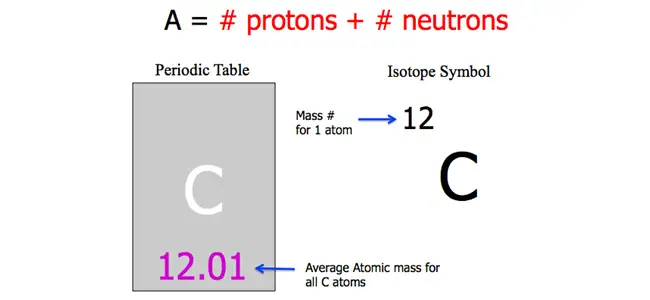Mass number refers to the total number of protons and neutrons contained in a single element. The mass number is an essential factor in determining the isotopic mass, which is measured using atomic mass. Every isotope contains different mass number but may differ in atomic number. For instance, there may be more neutrons compared to the electrons causing the mass to flourish or depreciate. Depending on the variations of isotopes, their percentage may be also added to get the mass number. For example, Helium has a mass number 4 but its atomic number is 2.
Mass number is often mistaken with atomic mass. While mass number involves counting the totality of protons and electron, the latter refers to the average mass of a certain atom. It is also known as atomic weight. The atomic mass may be weighed according to the value of individual isotopic mass.
The mass of an atom can be found in the nucleus. When calculating the mass number, it is important to note that the electron has a tinier mass compared to the protons and electrons. In this case, the mass number should be derived by adding the number of protons and the number of electrons. Each proton mass is equivalent to one atomic mass unit (AMU).
Mass number is an important word in chemistry. It is also one of the essential parts of the periodic table, which can be seen below the element symbol. The number that is listed therein is known as the average mass of all isotopic elements. The atomic number is usually listed as “Z†while the atomic mass number is represented as “Aâ€. Both of these figures and symbols are integer values. Hence when the atom is expressed in AMU, then the value is a lot closer to A.










